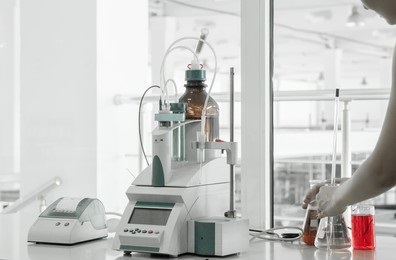Electrical conductivity indicates the ability of the solution to conduct current, which is one of the physical properties of water indicators. The electrical conductivity of pure water is very small and increases when the water contains inorganic acids, bases, salts, or organic charged colloids. Electrical conductivity is often used to indirectly infer the total concentration of charged substances in water, such as the content of dissolved salt in water.

The electrical conductivity of water depends on the nature and concentration of the charged substances, the temperature, and viscosity of the solution, etc. The electrical conductivity of water is an important indicator of the hydrogeochemical environment, and it can sensitively reflect the changes in the water chemical environment.
Water electrical conductivity is a particularly useful parameter to measure when performing environmental or process monitoring, and measured values of this parameter can identify many different variations. For example, in groundwater applications, electrical conductivity values can be used to identify saltwater intrusion, and electrical conductivity can also be used in freshwater environments to identify contamination events. So Lifeasible's water electrical conductivity testing service can be used to determine if there is a factor causing a change in water quality, and when used in conjunction with other parameters, the cause of the change in water quality can be determined in more detail.
The main methods currently used by Lifeasible in water electrical conductivity testing are electrode and electromagnetic induction methods. The electrode method has a wide range of applications, from very small electrical conductivity solutions to general aqueous solutions. The electromagnetic induction method is the non-contact detection method, has no polarization effect, has the advantages of high corrosion resistance and wide detection range, including the C4D (capacitively coupled contactless conductivity detection) method.
The C4D method is to install two annular metal electrodes on the outer wall of the pipe along the axial direction of the insulated pipe, the electrodes form a coupling capacitance with the measured solution inside the pipe through the pipe wall, and the measured solution between the two electrodes forms an equivalent resistance, so that a certain frequency AC (alternating current) signal is applied to the excitation electrode, and the current signal reflecting the conductivity of the measured solution can be detected at the detection electrode. In this method, the electrode and the solution are not in contact, which effectively solves the problems of electrode polarization and corrosion, and has the advantages of the simple electrode structure and good robustness.
Lifeasible can derive TDS (total dissolved solids) and salinity parameters from conductivity measurements. TDS or total dissolved solids is a measure of the concentration of solids dissolved in water, which can be inorganic salts or organic matter. In contrast, salinity is a measure of the concentration level of dissolved salts in water, which is particularly important when monitoring water to ensure specific salinity levels for aquatic organisms such as those in aquaculture. To find out how we can customize a test solution for you, you can contact our staff for a satisfactory response.